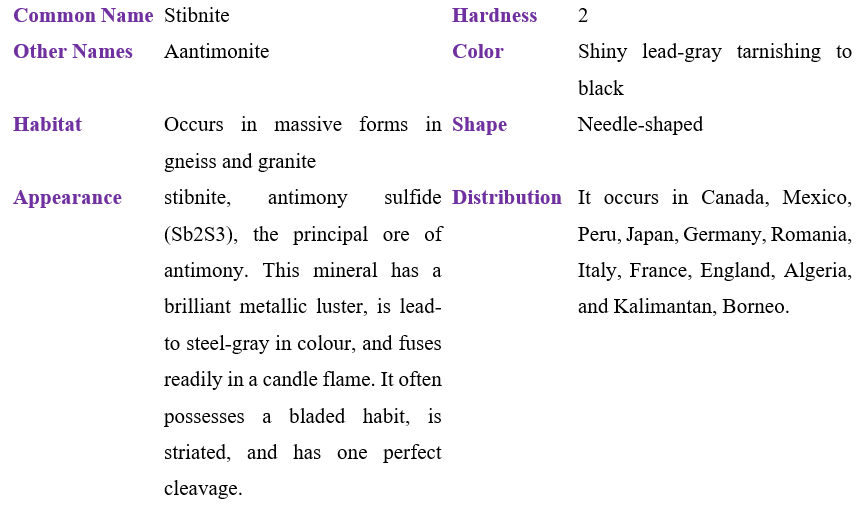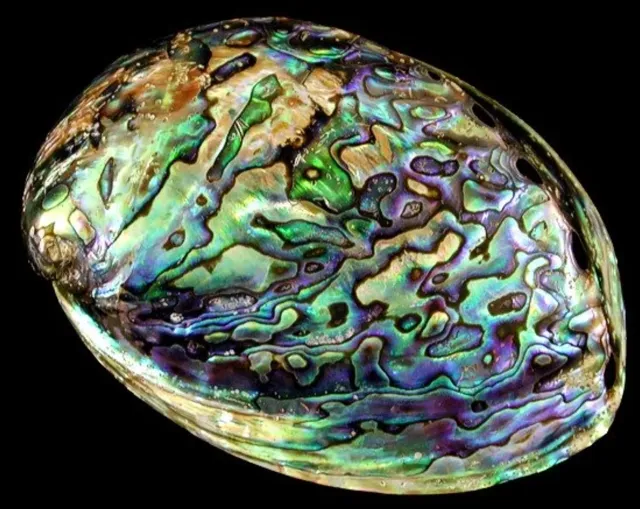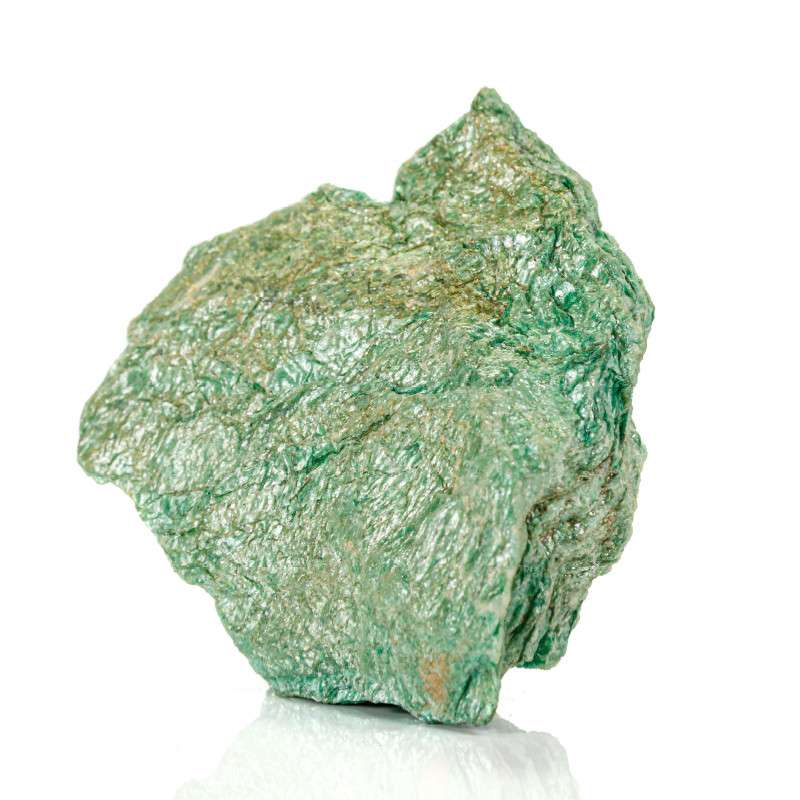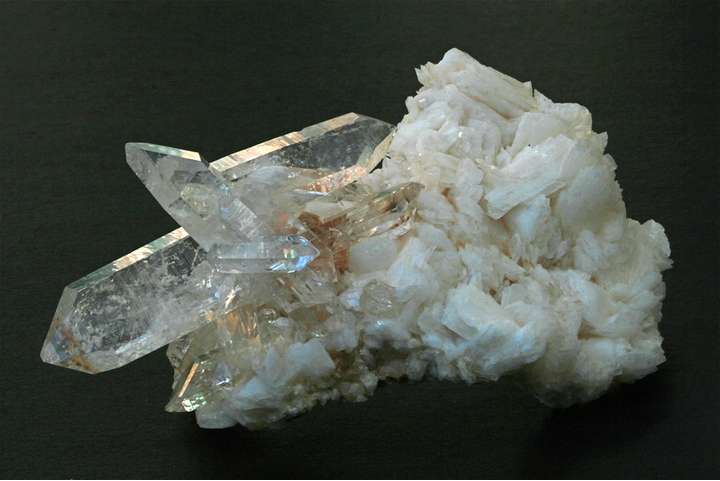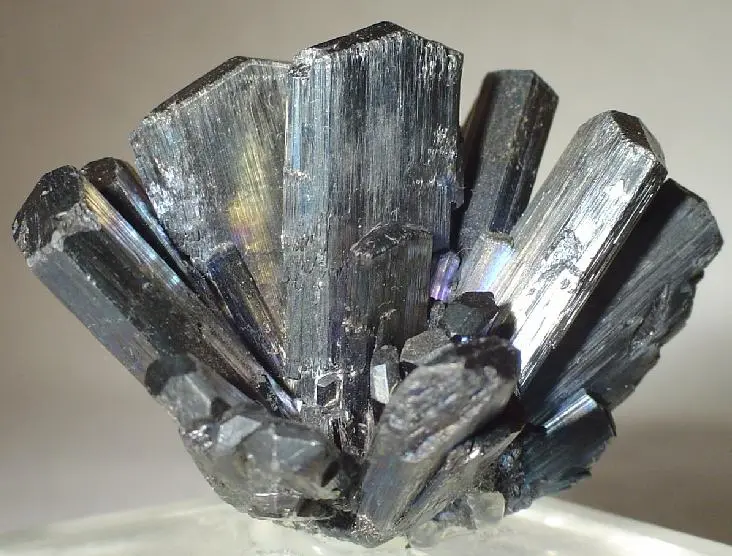
Appearance
Antimony sulfide (Sb2S3) is the chemical composition of stibnite, a sulFide mineral. The primary antimony ore. Its hue ranges from lead-gray to silvery gray, and when exposed to light, it frequently takes on an iridescent black tarnish. Usually, it takes the form of long, prismatic crystals that can be twisted or bent. Structures parallel to the prism faces are a common marking on these crystals. Although it can also be granular or large, stibnite usually takes the form of coarse, uneven masses or radiating sprays of needle-like crystals.
Geographical Distribution
The main reason stibnite (Sb2S3) is mined is to extract antimony, which is used in many different industrial processes. Around the world, stibnite can be found in a variety of geological settings and mining sources. China, Tajikistan, Russia, South Africa, the United States, Mexico, Bolivia, and Australia are a few prominent countries that mine stibnite. Smaller amounts of stibnite deposits can also be found in nations including Canada, Peru, and Myanmar.
History
The American Museum of Natural History houses the largest specimen (weighing one thousand pounds) that is on public exhibit as of May 2007. The largest stibnite single crystals ever found were measured at about ~60×5×5 cm and came from Germany, France, and Japan, among other places.
Metaphysical Properties
Stibnite has a grounding, purifying, and protecting energy. Stibnite is a potent crystal for manifestation and can be utilized to ground high frequency energies into the material world.
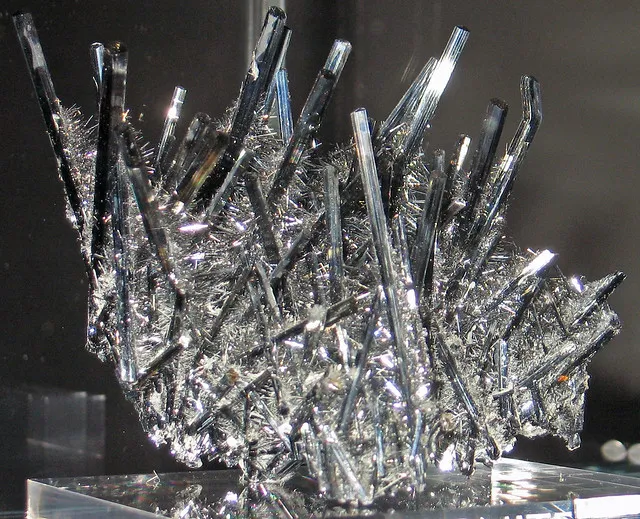
Chemical Composition
The primary antimony ore is stibnite, or antimony sulfide (Sb2S3). The two elements that make up stibnite are sulfur (S) and antimony (Sb). By weight, it is roughly 71.4% antimony and 28.6% sulfur.
Uses
The following are some of the main fields and applications for antimony and stibnite:
- Fire Retardants: In plastics, textiles, and other materials, antimony compounds—in particular, antimony trioxide (Sb2O3)—are frequently employed as flame retardants. In the case of a fire, they function by limiting the spread of flames and the emission of harmful gasses.
- Batteries: Lead-acid batteries, for example, employ antimony as an alloying agent to increase the mechanical strength and efficiency of the battery grids.
- Ceramics: Ceramics are treated with antimony oxide to increase their whiteness and opacity. During the firing process, it also serves as a fining agent to get rid of tiny bubbles and contaminants.
- Glass: Certain glass types, including opal glass, are made with antimony compounds added to increase opacity and give the glass a milky white appearance.
- Semiconductor Industry: In the semiconductor industry, antimony is employed in the fabrication of infrared detectors and diodes, among other things.
- Antimonial Compounds: Applications for antimony compounds can be found in the pharmaceutical sector. For instance, tartar emetic, or antimony potassium tartrate, was originally utilized as a medication; but, because of toxicity issues, its use has decreased.
- Military Applications: Due to its ability to produce a visible trace while in flight, antimony is employed in some military applications, such as tracer bullets.
- Paints and Pigments: Paints and pigments contain antimony compounds to give them longevity and opacity.
- Textiles: In the textile business, antimony compounds are occasionally employed as a dye mordant to fix dyes to fabric.
- Electronics: Antimony finds application in the manufacturing of some electrical parts and appliances.
- Agriculture: Antimony compounds were historically employed as fungicides and insecticides in agriculture, but because of environmental concerns, their use has declined.
Table
